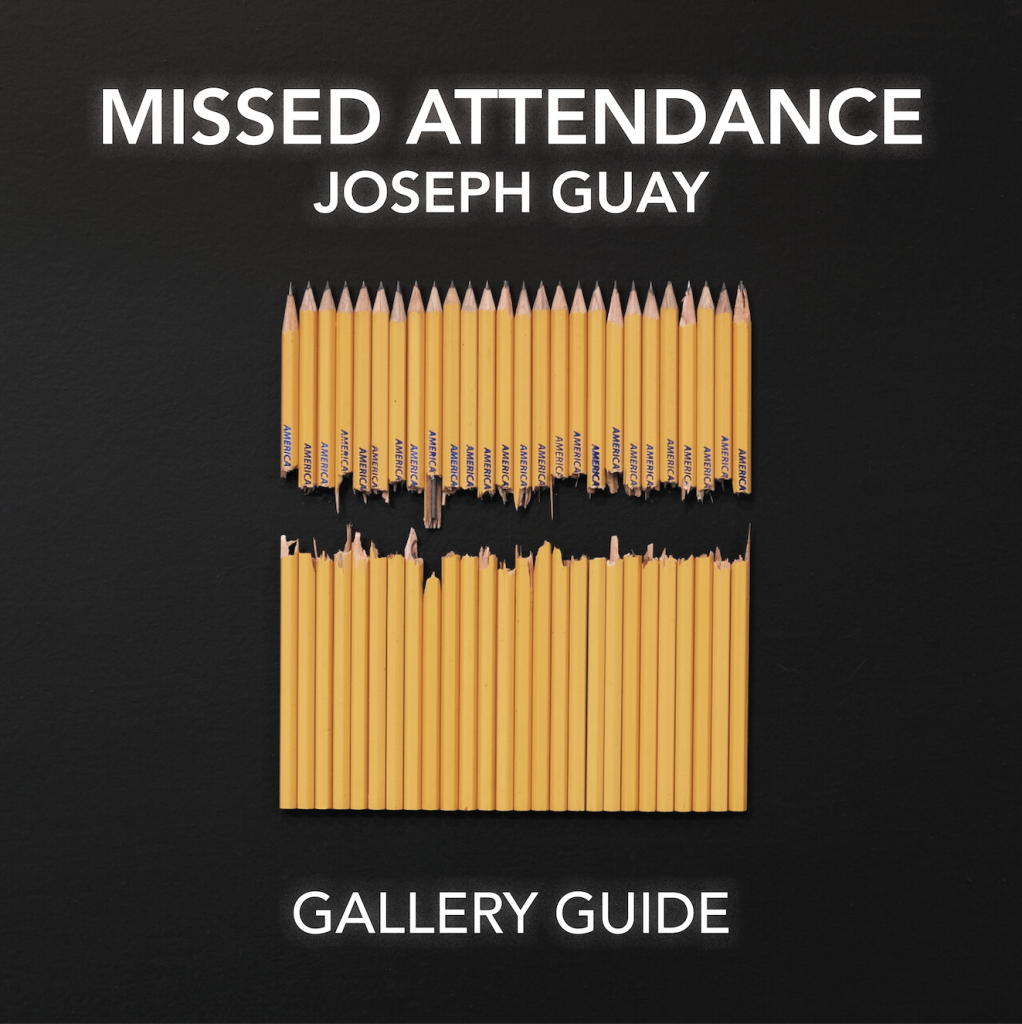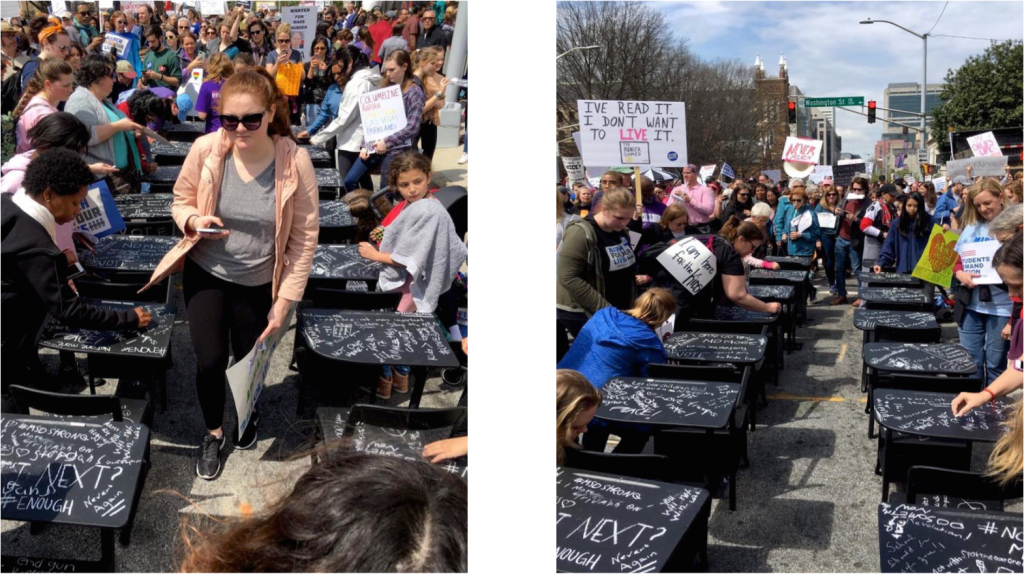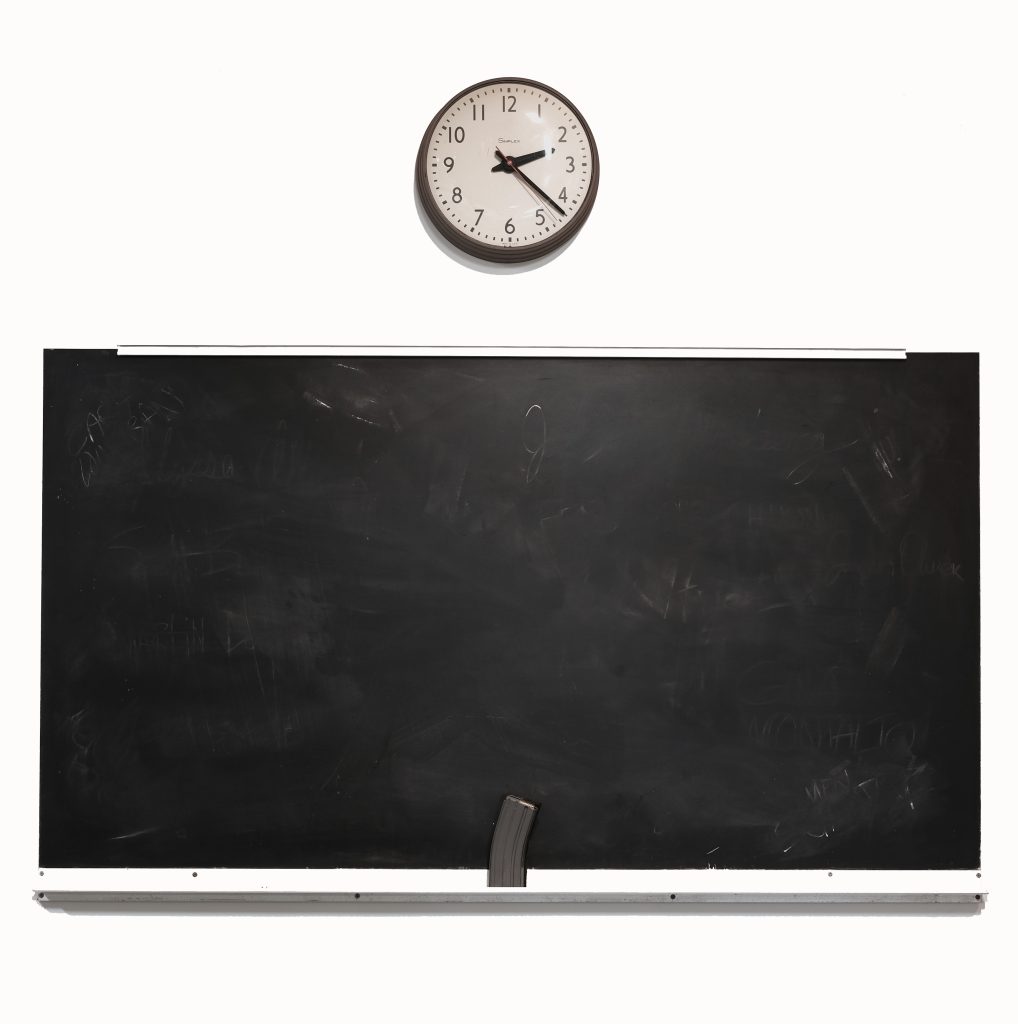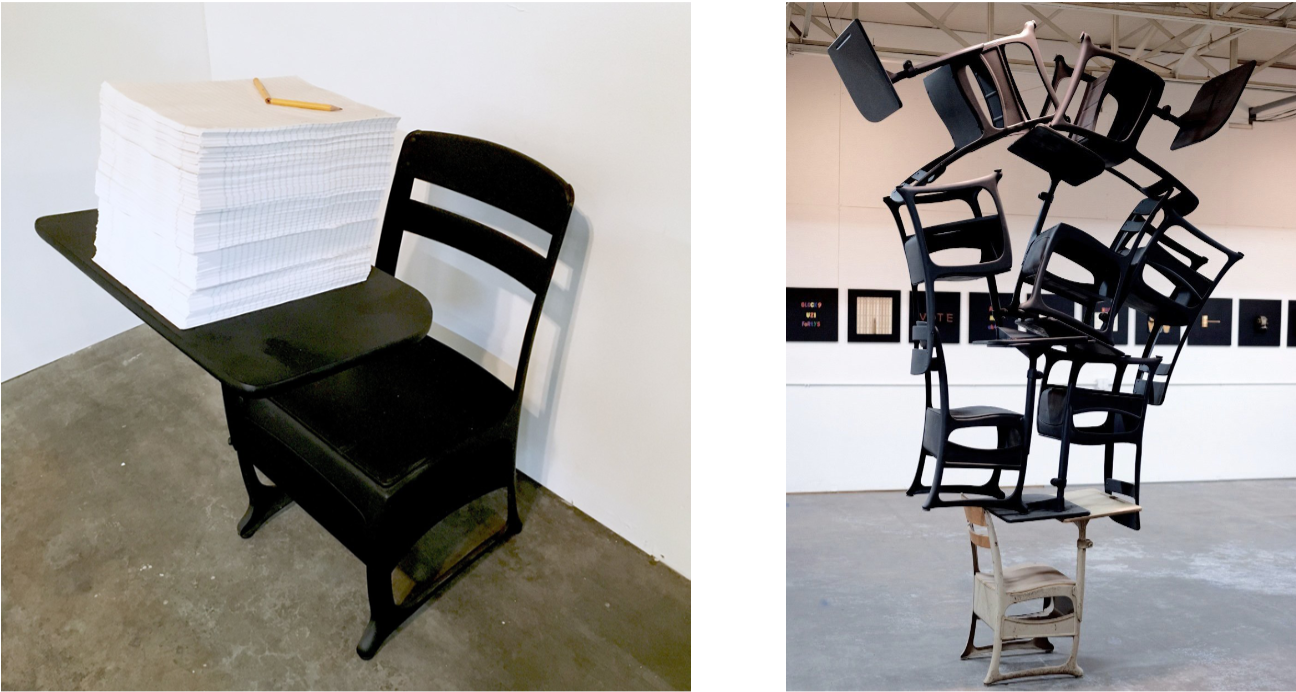
Joseph Guay’s visual art focuses on the political and social issues we face in America. His politically charged exhibition of paintings and sculptures entitled “Remnants of the Human Condition,” for example, paid tribute to Trayvon Martin, Alton Sterling, and Eric Garner, plus World Trade Center and Boston Marathon bombings, and Pulse Nightclub and Sandy Hook Elementary mass shootings. Guay’s work is represented in prominent private and public collections (such as of Elton John and the High Museum), and has been featured on CNN Español and in numerous publications including Billboard Magazine, Art Papers, Faces – Grafiche Dell’Artiere, and ArtsATL.
In response to the 2018 mass shooting in Parkland, Florida, Guay began creating public art installations to capture complex opinions about the epidemic that has forced a generation of students to grow up practicing active shooter drills. This year, the Museum of Arts and Sciences is proud to present “Missed Attendance,” a powerful installation that explores how gun violence has changed the American classroom, forcing us to consider: “What is the future of education?” Working within the frame of collective memory, Guay immerses us (physically and psychologically) in a memorial to lost lives and lost values.
On February 14, 2018, a 19-year-old expelled student opened fire with a semi-automatic weapon on his peers and staff at Marjory Stoneman Douglas High School in Parkland, murdering 17 people and injuring 17 others. Five years – and 168 school shootings – later, polarizing debates about gun rights and school safety continue.
“Like the rest of the country, I was heartbroken over the losses,” said Guay. “Like names from a chalkboard, their lives were erased in minutes.” Guay purchased 14 vintage school desks and painted them with matte black chalkboard paint as a memorial to the 14 murdered students “who would never sit in a classroom again.” Representing “the assigned desks that would be forever empty,” they were used as a temporary site-specific installation at the Atlanta Capitol during the 2018 “March for Our Lives” demonstration, where they provided an opportunity for public response.
Guay placed a piece of white chalk on each desk, inviting protesters to write on the desks’ surfaces. Many sat in the desks, others kneeled; hundreds recorded words of hope, frustration, and calls to action. Collectively, the artist and audience created a time capsule of social commentary. Guay hoped the installation would symbolize the turning point “in this battle for safe schools, and resonate after the march; but more shootings continued as the months passed.”

Haunted by the injustice, Guay continued to create a larger body of work using vintage readymade school supplies and classroom objects, along with gun parts and ammunition from mass shootings. One small mixed media work includes six identical vintage yellow cardboard Crayola crayons boxes mounted on a black surface. The undersides of the opened box lids reveal traces of the brilliant primary colors once contained in the boxes, but the crayons themselves have been replaced with live round ammunition. Another work includes colorful plastic magnetic letters — tools to teach young students the alphabet — arranged to spell violent words like 9MM, UZI, GLOCK9, and ak47. A standard metal turn-crank pencil sharpener with open pencil holes filled by bullets takes new life resembling the cylinder of an 8-shot revolver. Matching the bullets to the stainless-steel construction of the sharpener, Guay blurs the line between two drastically different tools of power.

Pairing nostalgic objects of innocence with contemporary objects of violence, Guay presents what should be stark and startling contrasts as new quotidian objects. An AR-15 semi-automatic magazine clip stands in for a chalkboard eraser, almost without notice. Through these processes, Guay grieves the loss of the traditional American classroom he knew as a child – and grapples with a defining issue of our era. The artist wasn’t present at the Parkland tragedy, nor any other mass shooting. Informed by his personal (albeit mediated) memory of these events, he explores a shared collective memory of what it felt like to be safe and what it feels like to be powerless.
The assemblage entitled “Roll Call” includes a vintage analog wall clock placed above a blackboard. The hands of the clock have been fixed at 2:22 to represent the exact time the first bullet was fired at the 2018 mass shooting. The names of the victims have been written on the blackboard in white chalk and erased, an act that parallels the collective tendency to dismiss issues deemed not within our control. The ephemeral nature of chalk and faint traces of dust retained on the surface of the blackboard emphasize the fleeting nature of childhood innocence and life itself – but also of our own voices and values.

Guay’s use of the chalkboard as a mnemic apparatus to aid our collective memory is advanced by his use of the mid-century combination desk/chair unit as a participatory element to engage the human body. Romanticizing the low-tech 1970s-era classroom (a time when he himself felt safe), the desks serve a critical role in engaging the contemporary audience. These, of course, were not the style of desks present in the 2018 classroom; but represent a requiem to an ideal, evoking grief and imploring us to question the future.
The primary subject of “Missed Attendance” is the human bodies of the 14 students killed. As Guay re-stages their classroom in the sterile setting of the gallery, the most important element is the absent bodies. Although the empty desks, lined up and dressed in mourning, are unable to fulfill their purpose, Guay relies on us to complete the work by physically occupying the negative space.
In “Am I Next,” a tall stack of ruled notebook paper balances on the writing surface of a 1960s desk painted with black chalkboard paint. Our assignment: take a sheet of paper, sit, write thoughts, and leave in the desk. Meanwhile another assemblage, “The Weight of Loss,” poses a more direct threat. A chaotic stack of seven black-painted desks balances on one unpainted desk. Referencing a totem, this counter-monument is carefully balanced but appears unsteady. The desk at the bottom symbolizes the student that returns to the classroom after losing seven friends — and the pressure he or she might feel to hold up the weight of this loss. The tension of the work is in our understanding of what might happen. We assume the stack will collapse; our fear of that happening in a crowded public space emphasizes the urgency of time before another shooting occurs.

The Museum’s intent in staging this exhibit is not to endorse a political legislative agenda, but rather to allow an opportunity for the work of Joseph Guay to deepen our understanding of how our classrooms have changed and to consider the future of education within the context of present-day threats.
